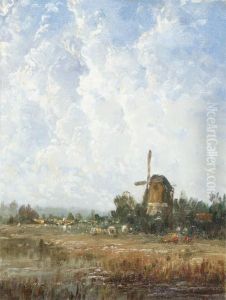Ferdinand Adriaensens Paintings
Ferdinand Adriaensens was a Flemish painter known for his contributions to the Baroque movement and particularly for his genre scenes and still-life paintings. Born around 1580 in Antwerp, which was then part of the Spanish Netherlands, Adriaensens lived during a period of significant cultural and artistic development in Europe. Despite the political and religious upheavals of his time, including the Eighty Years' War and the Counter-Reformation, the arts flourished in the region, with Antwerp becoming a major center for artists, craftsmen, and traders.
Adriaensens' work is not as widely documented as some of his contemporaries, and as a result, less is known about his personal life and training. It is believed that he became a master in the Antwerp Guild of St. Luke around the year 1609, which suggests he underwent the traditional apprenticeship for painters and was recognized for his artistic skill. His paintings often featured intricate interior scenes that depicted everyday life, as well as still lifes with a strong attention to detail and texture. These works are characterized by their vivid realism and often contained moralistic or allegorical messages, which was a common practice of the time.
Throughout his career, Adriaensens' work reflected the rich cultural atmosphere of Antwerp and the increasing interest in secular subjects in art. His genre scenes, in particular, provide a glimpse into the private lives of the wealthy citizens of the time, showcasing their luxurious interiors and the objects with which they surrounded themselves. Adriaensens was skilled in creating a sense of depth and perspective in his works, and he had an acute ability to render different materials, from the gleam of metal and glass to the textures of fabrics.
Ferdinand Adriaensens passed away in 1650, and while he may not be as well-remembered as some of his contemporaries like Peter Paul Rubens or Anthony van Dyck, his work still offers valuable insights into the artistic trends and social customs of the Baroque period in the Southern Netherlands. His paintings can be found in various museums and collections, where they continue to be studied and appreciated for their contribution to the genre of still life and genre painting in the 17th century.
